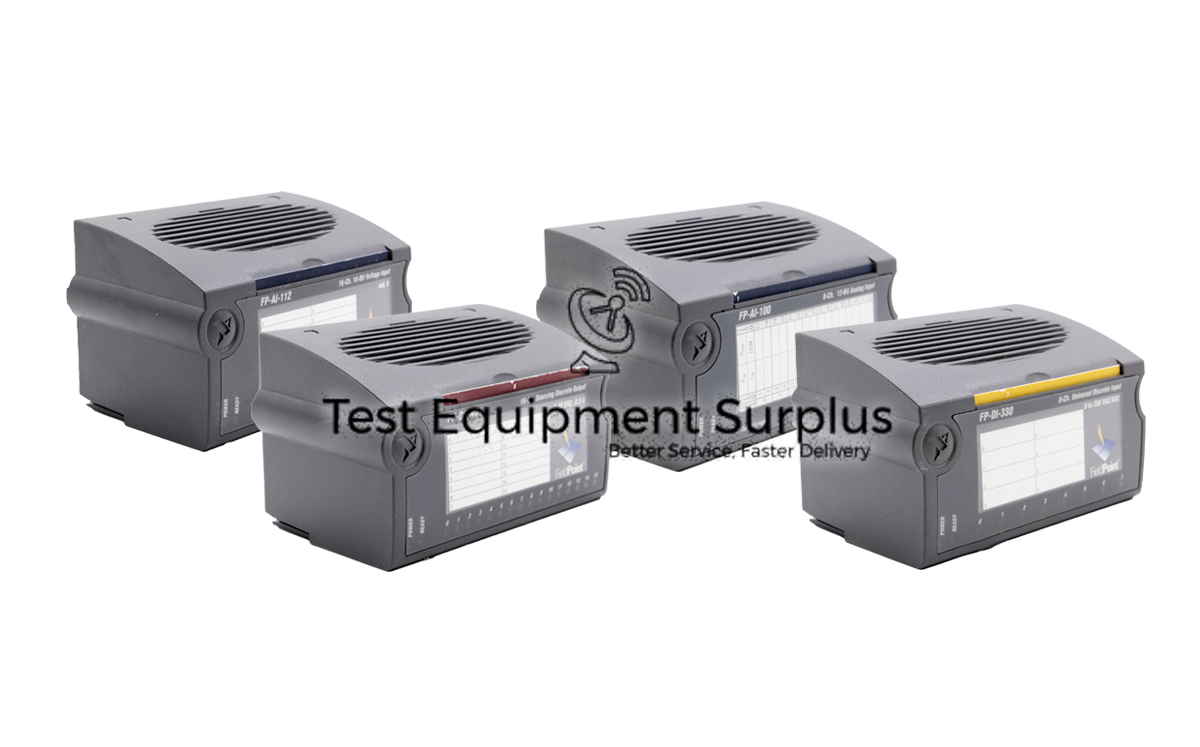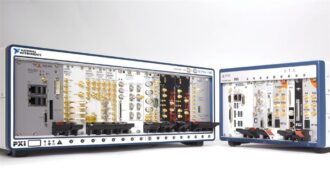Description
The NI FP-RLY-420 is a robust Relay Module for FieldPoint systems, identified by its part number 777518-420. It features eight SPST (single-pole single-throw) relay channels, each capable of handling a maximum switching current of 3 amperes. The module operates effectively at voltages of 35 VDC or 250 VAC, catering to a variety of electrical requirements.
Each channel is equipped with NO (Normally Open) and IC (Internal Common) terminals, and for added safety, a fast-acting 3 A, 250 V fuse can be installed. The relay type utilized in this module is electromechanical (SPST), ensuring reliable performance. When the module is powered on, its default state is ‘off’, and it exhibits an effective resistance of approximately 150 mΩ between the IC and NO terminals.
Designed with integrated MOVs for protection, the NI FP-RLY-420 ensures that excessive voltages do not compromise the relay contacts. It boasts 250 Vrms continuous isolation between the communication bus and the backplane, which is critical for preventing electrical interference and maintaining system integrity. The module’s relays are capable of a maximum switching frequency of 20 operations per second, with an electrical switching frequency at maximum load of 1 operation per second. Lastly, the rated operate time for the relays is 8 milliseconds, which highlights the module’s swift response to control signals.
| Specification | Detail |
|---|---|
| Part Number | 777518-420 |
| Product Name | NI FP-RLY-420 Relay Module for FieldPoint |
| Channels | 8-Channel, SPST Relay Module |
| Maximum Switching Current | 3 amperes |
| Operating Voltage | 35 VDC or 250 VAC |
| Terminals per Channel | NO (Normally Open) and IC (Internal Common) |
| Fuse Specification | Fast-acting, 3 A, 250 V |
| Relay Type | Electromechanical (SPST) Relays |
| Power-On State | Off |
| Effective Resistance | Approximately 150 mΩ between IC and NO terminals |
| Protection | Integrated MOVs |
| Isolation | 250 Vrms continuous between communication bus and backplane |
| Maximum Switching Frequency | 20 operations per second |
| Electrical Switching Frequency at Max Load | 1 operation per second |
| Rated Operate Time | 8 ms |
Question 1: What is the maximum switching current and the type of relay utilized in the NI FP-RLY-420 FieldPoint Relay Module, as well as its default state and the resistance between the IC and NO terminals?
Answer 1: The maximum electrical switching frequency at full load for the NI FP-RLY-420 relay module is 1 operation per second.
Question 2: What is the maximum switching frequency of the NI FP-RLY-420 Relay Module for FieldPoint, and how does this compare to its electrical switching frequency at maximum load?
Answer 2: The NI FP-RLY-420 Relay Module for FieldPoint has a maximum mechanical switching frequency of 20 operations per second, whereas its electrical switching frequency at maximum load is reduced to 1 operation per second.
Question 3: What is the maximum electrical switching frequency at full load for the NI FP-RLY-420 relay module?
Answer 3: Each SPST relay channel in the NI FP-RLY-420 Relay Module for FieldPoint systems can handle a maximum current of 3 amperes, and the module is equipped with integrated MOVs (Metal Oxide Varistors) to provide protection against excessive voltages.
Question 4: What is the maximum current handling capacity of each SPST relay channel in the NI FP-RLY-420 Relay Module for FieldPoint systems, and what type of protection is integrated to safeguard against excessive voltages?
Answer 4: The NI FP-RLY-420 FieldPoint Relay Module utilizes electromechanical SPST relays, has a maximum switching current of 3 amperes, defaults to an ‘off’ state when powered on, and exhibits approximately 150 milliohms of resistance between the IC and NO terminals.
Question 5: What is the maximum operating voltage for each channel on the NI FP-RLY-420 Relay Module, and what type of fuses can be used for added safety?
Answer 5: Each channel on the NI FP-RLY-420 Relay Module can operate at a maximum voltage of 35 VDC or 250 VAC, and for added safety, a fast-acting 3 A, 250 V fuse can be installed.



